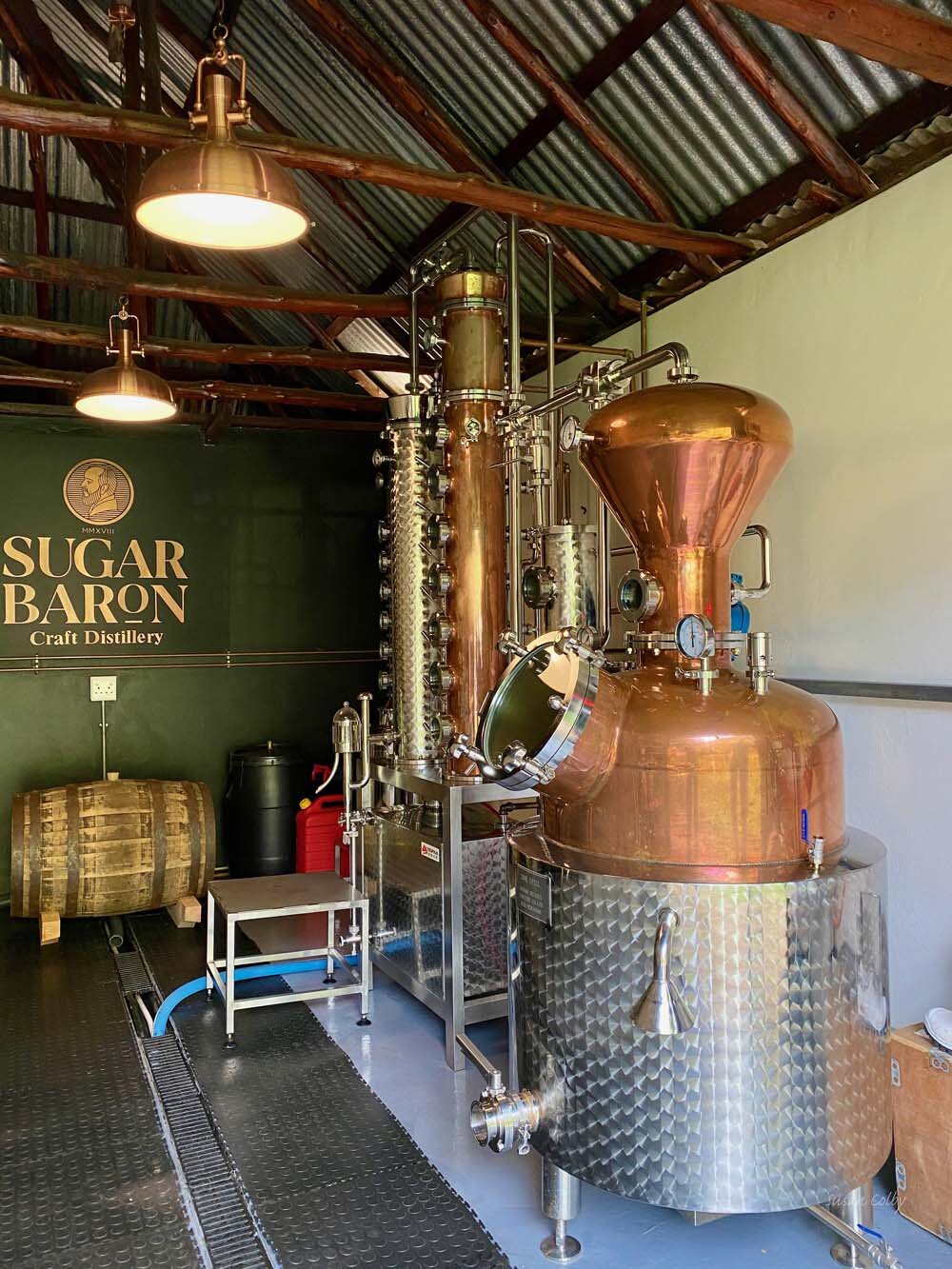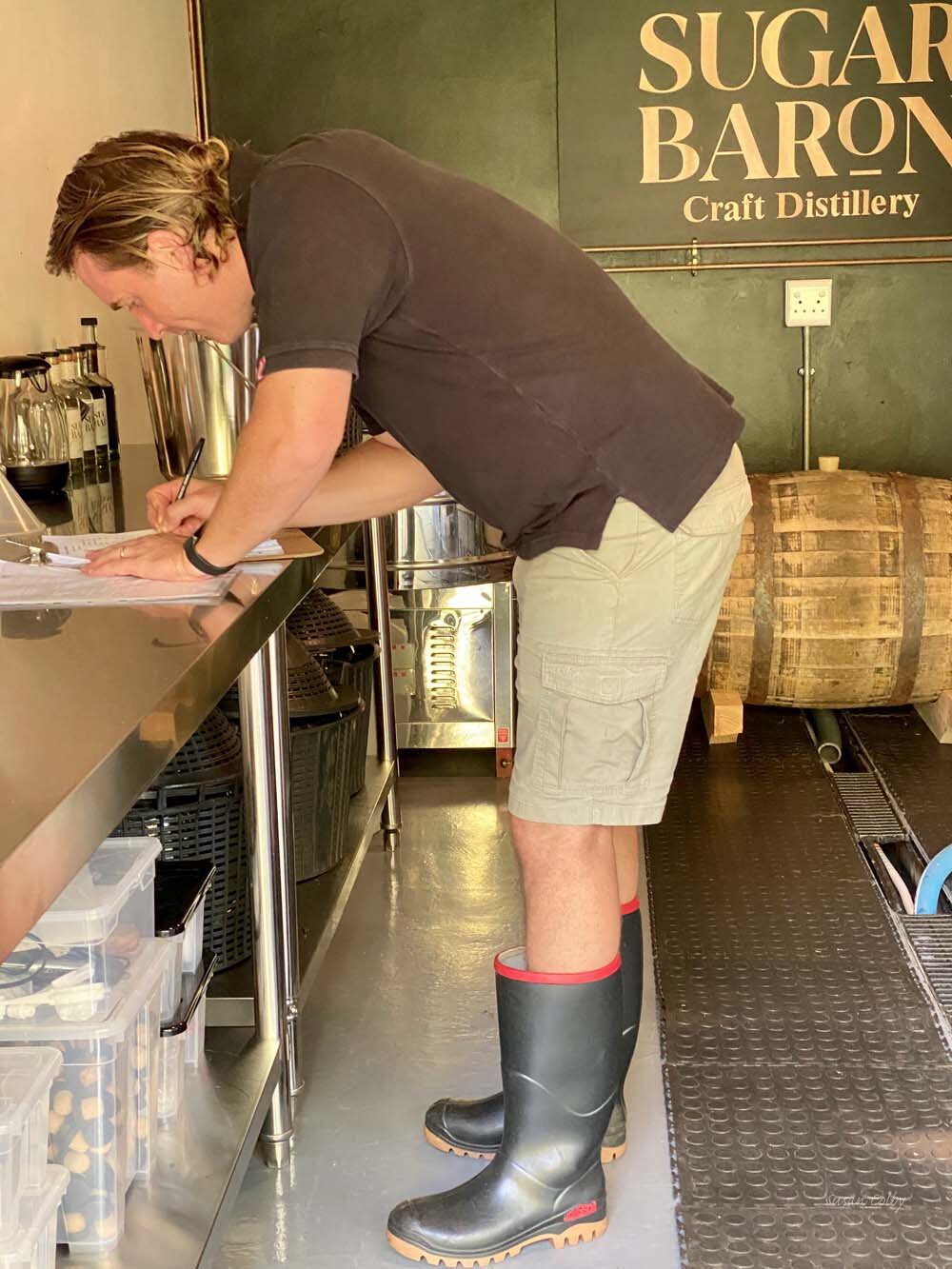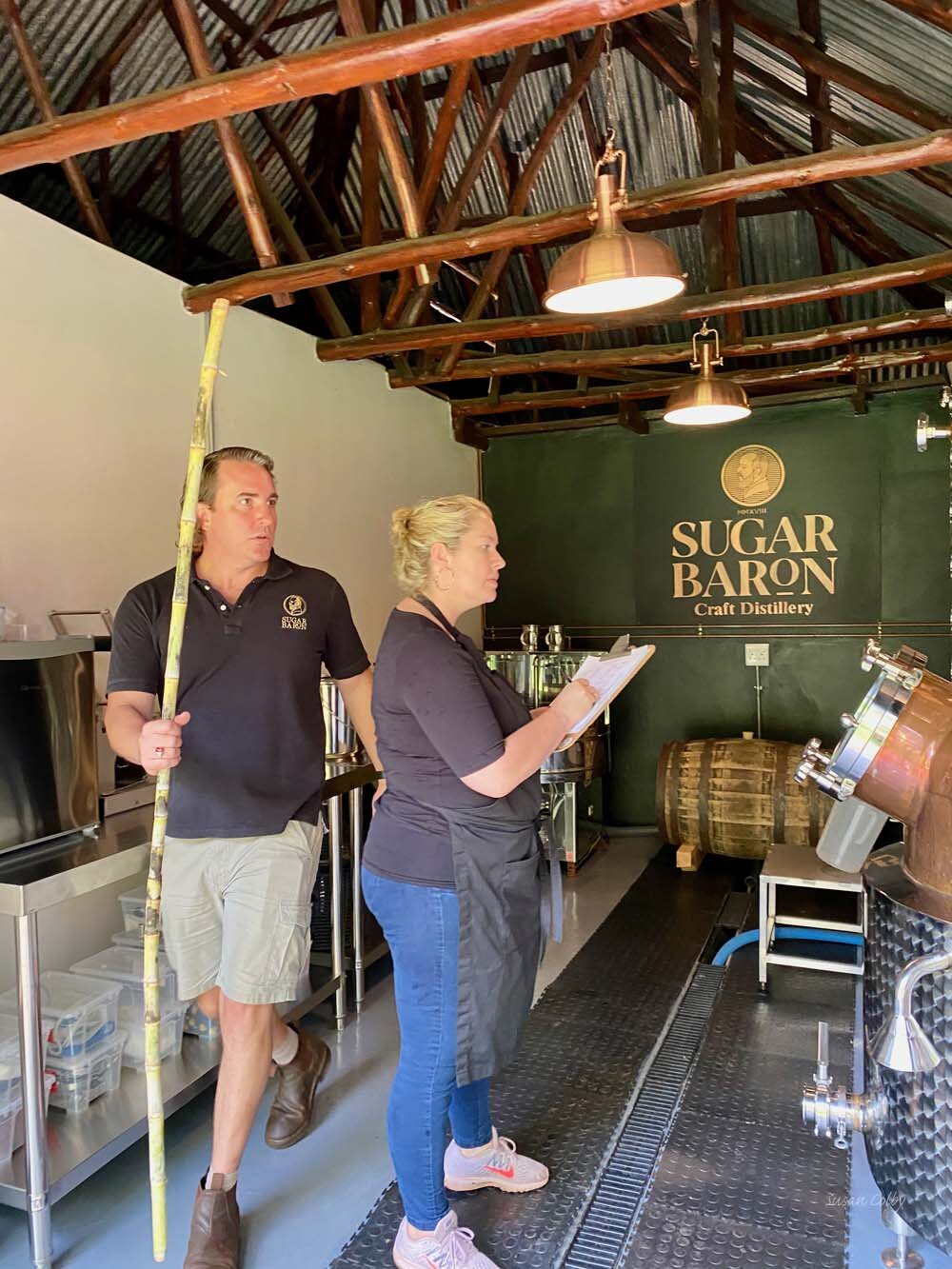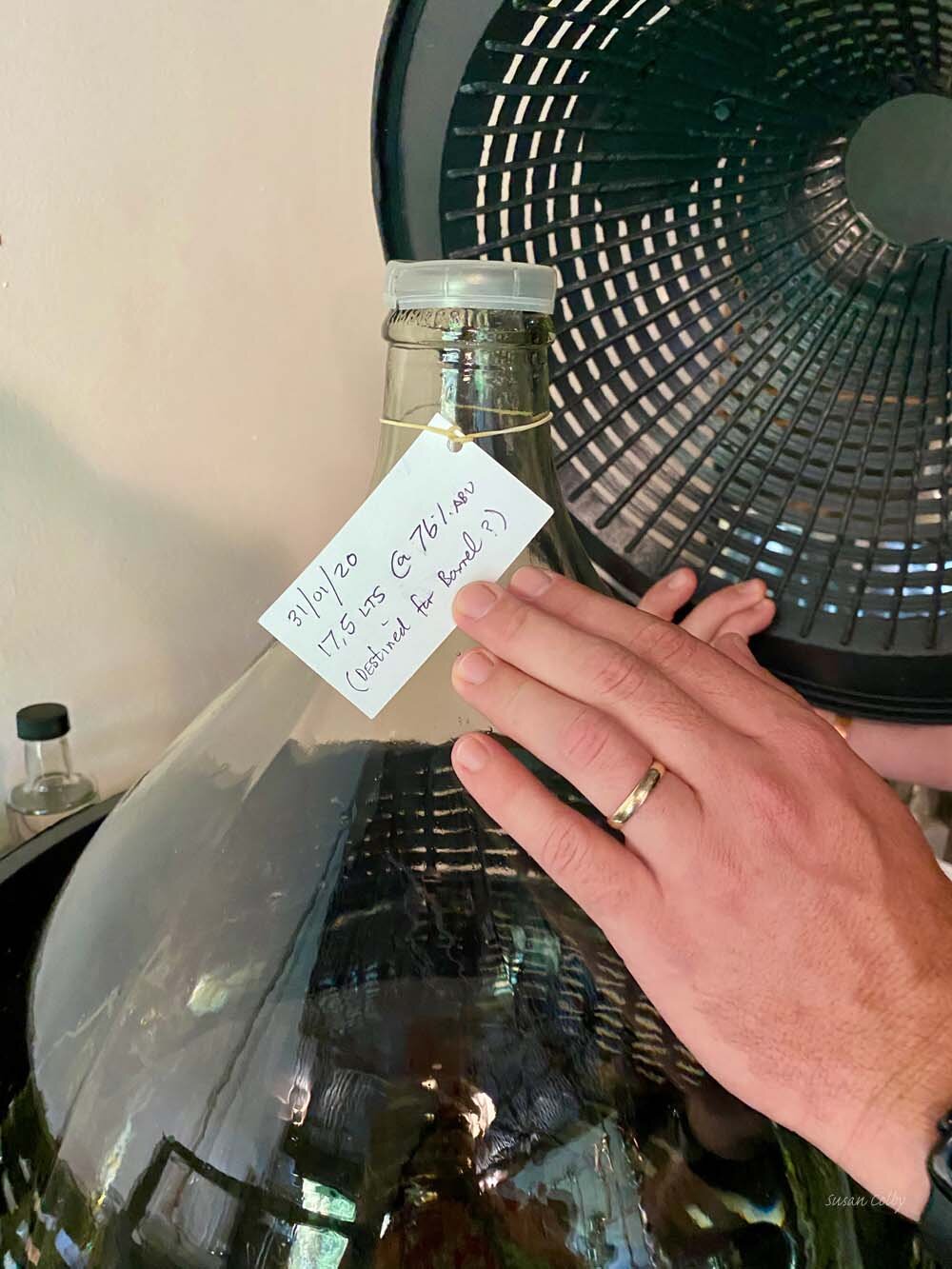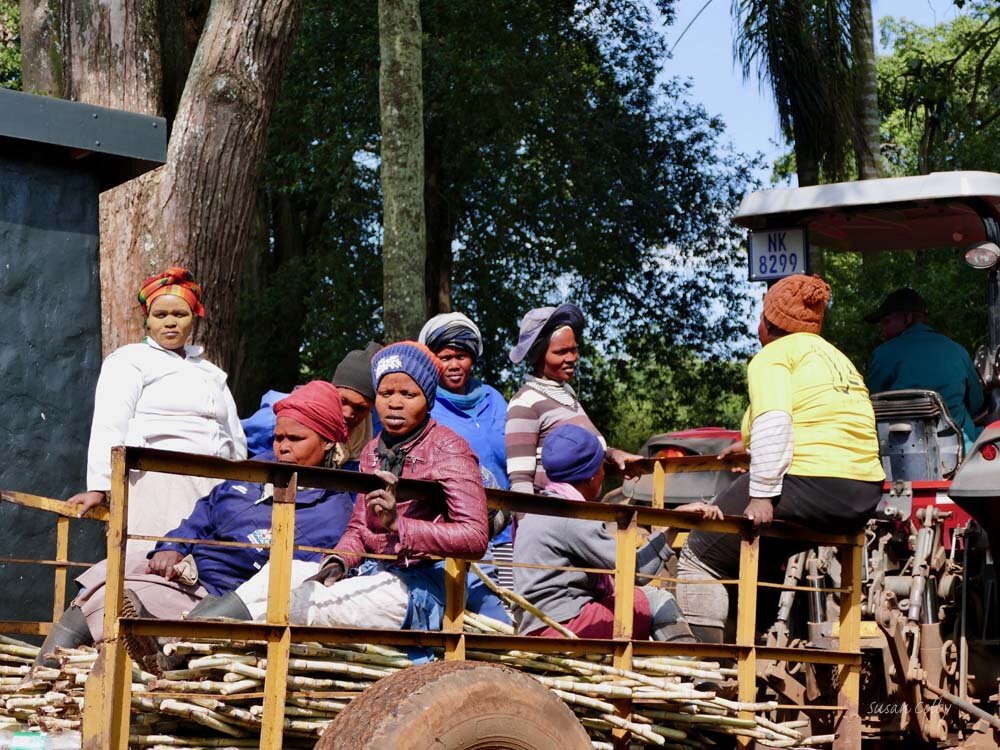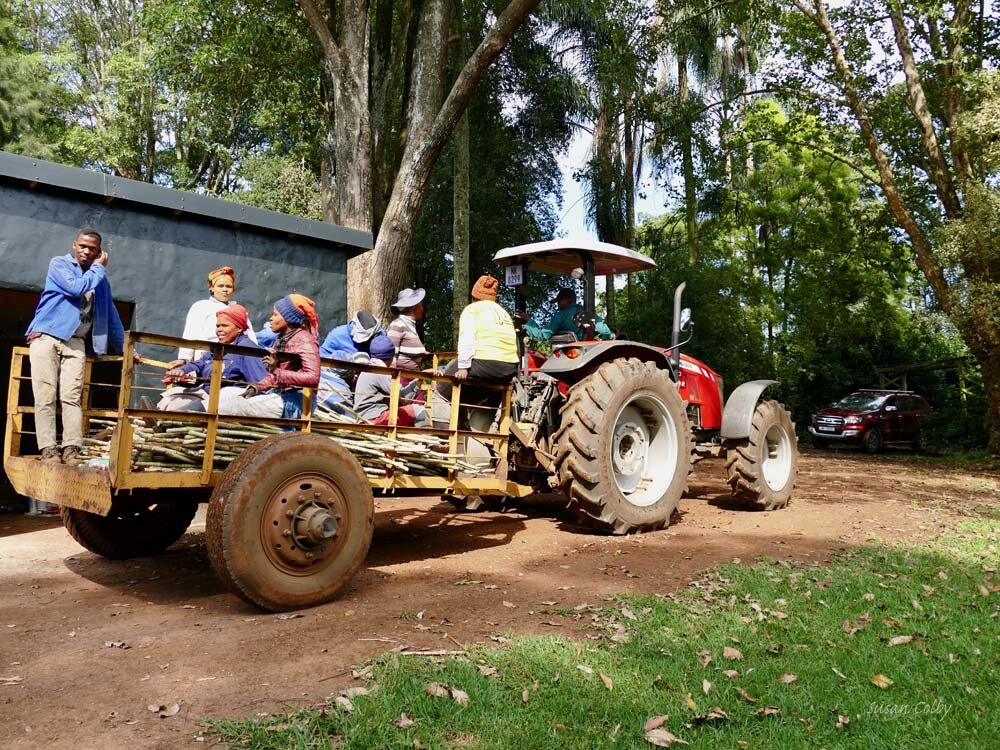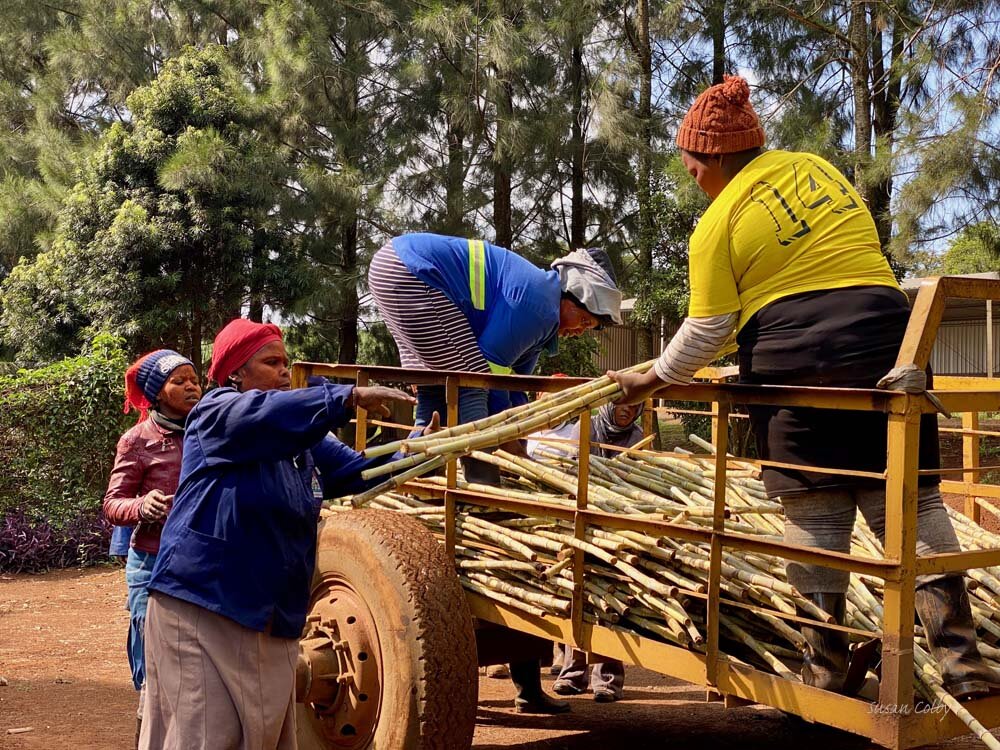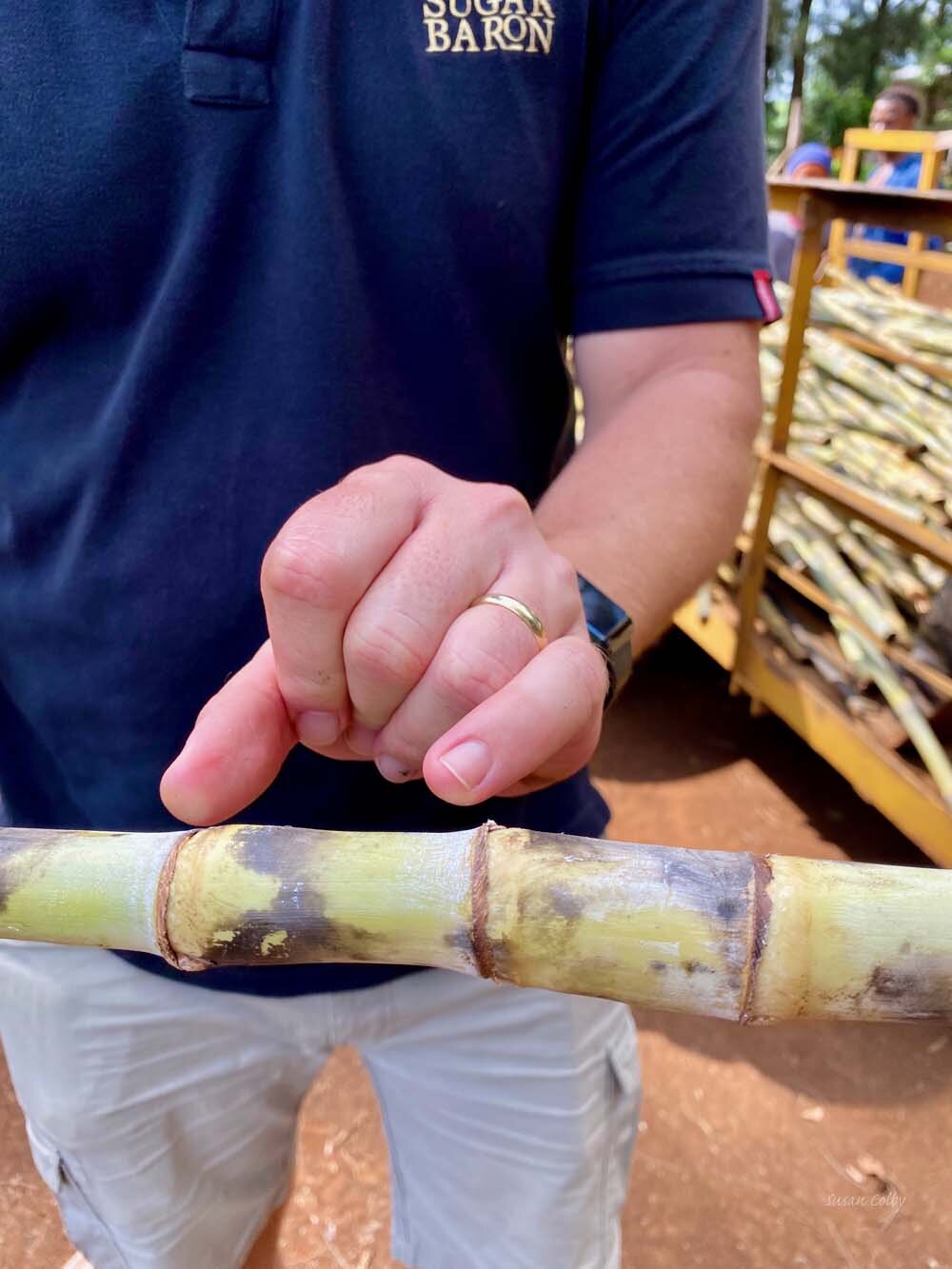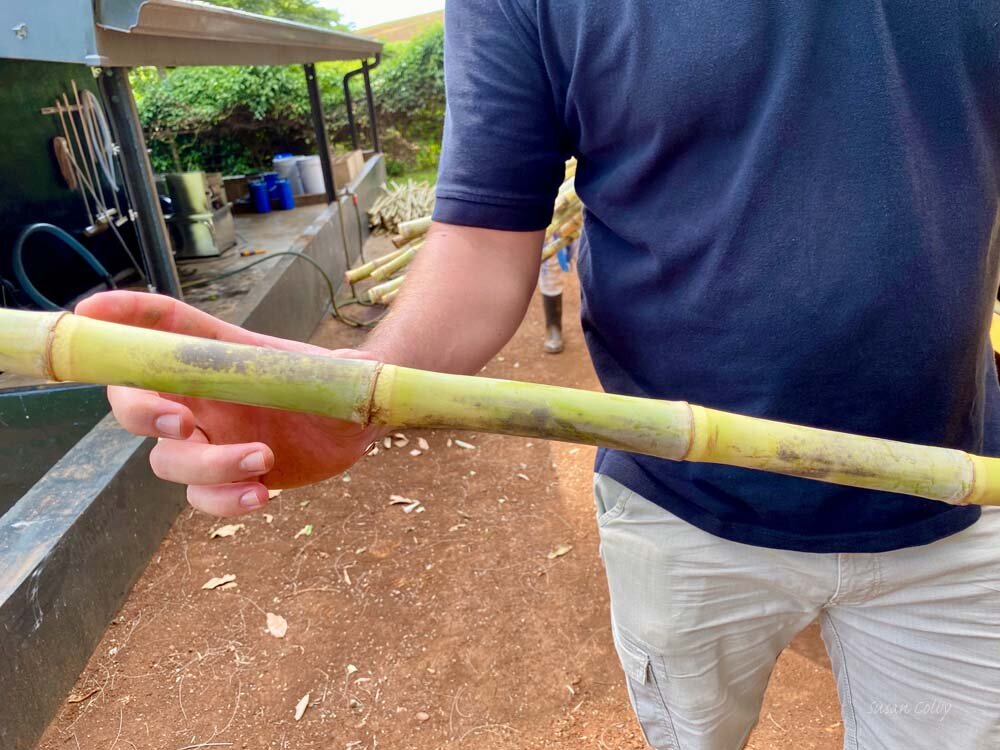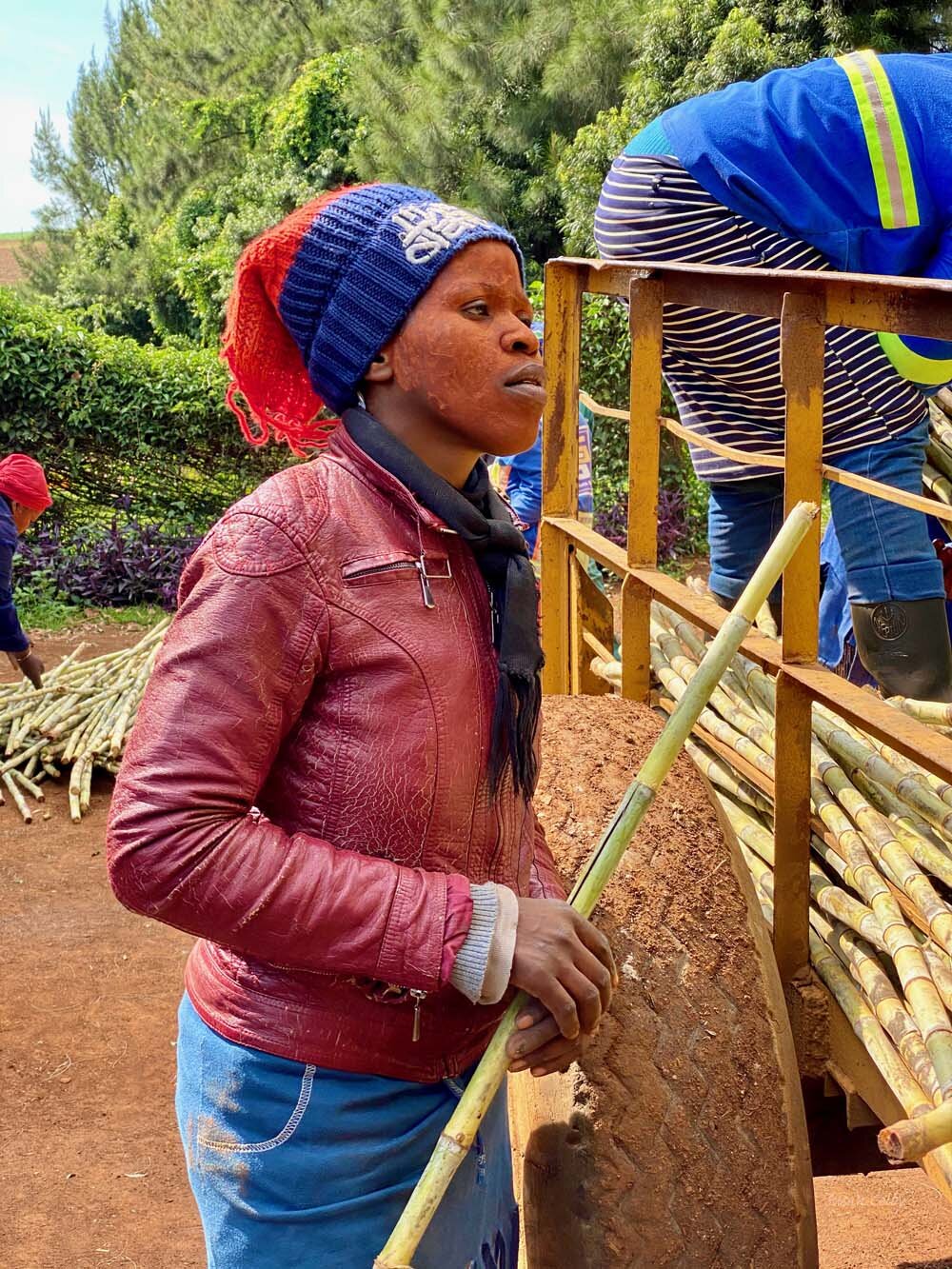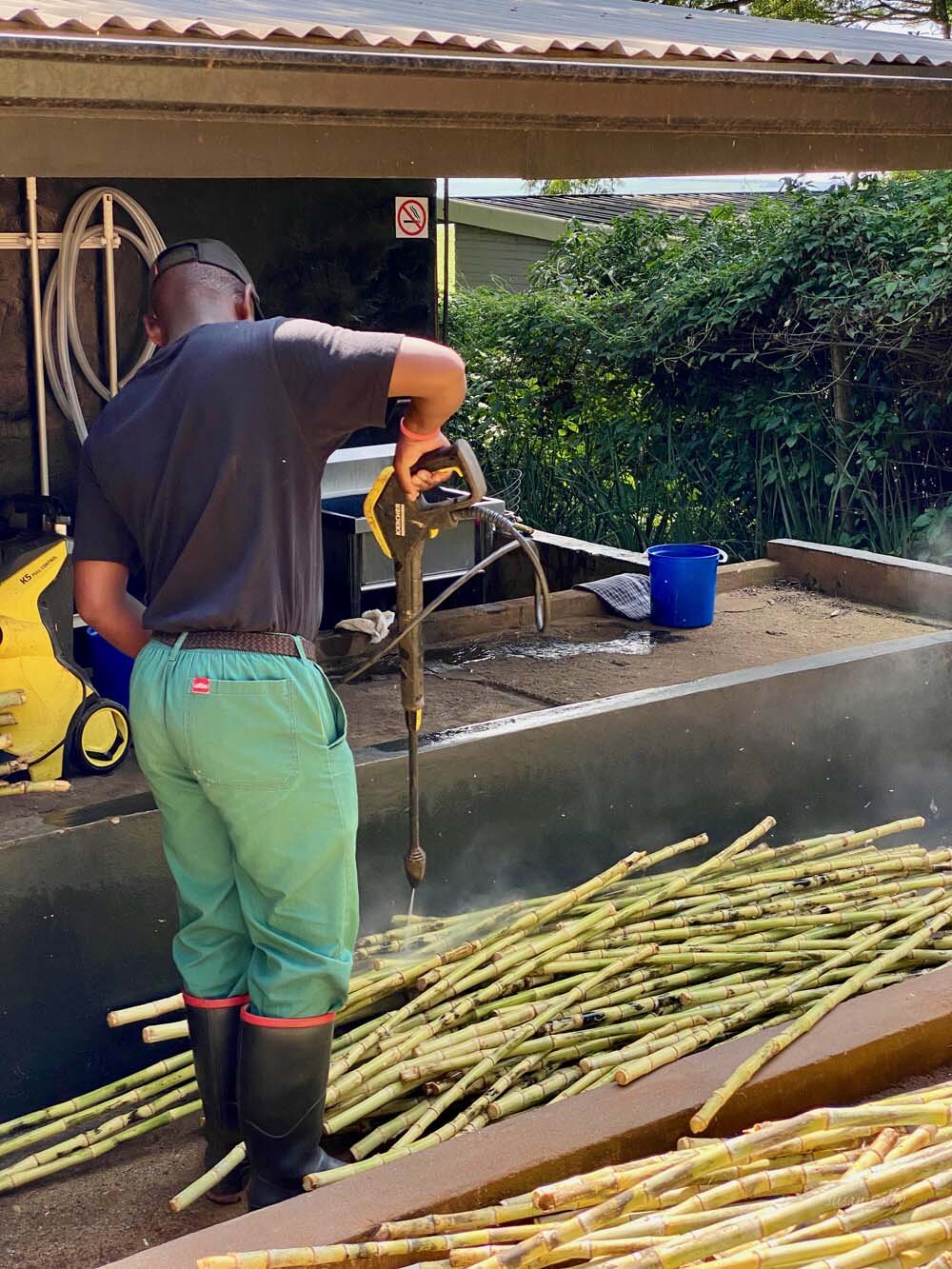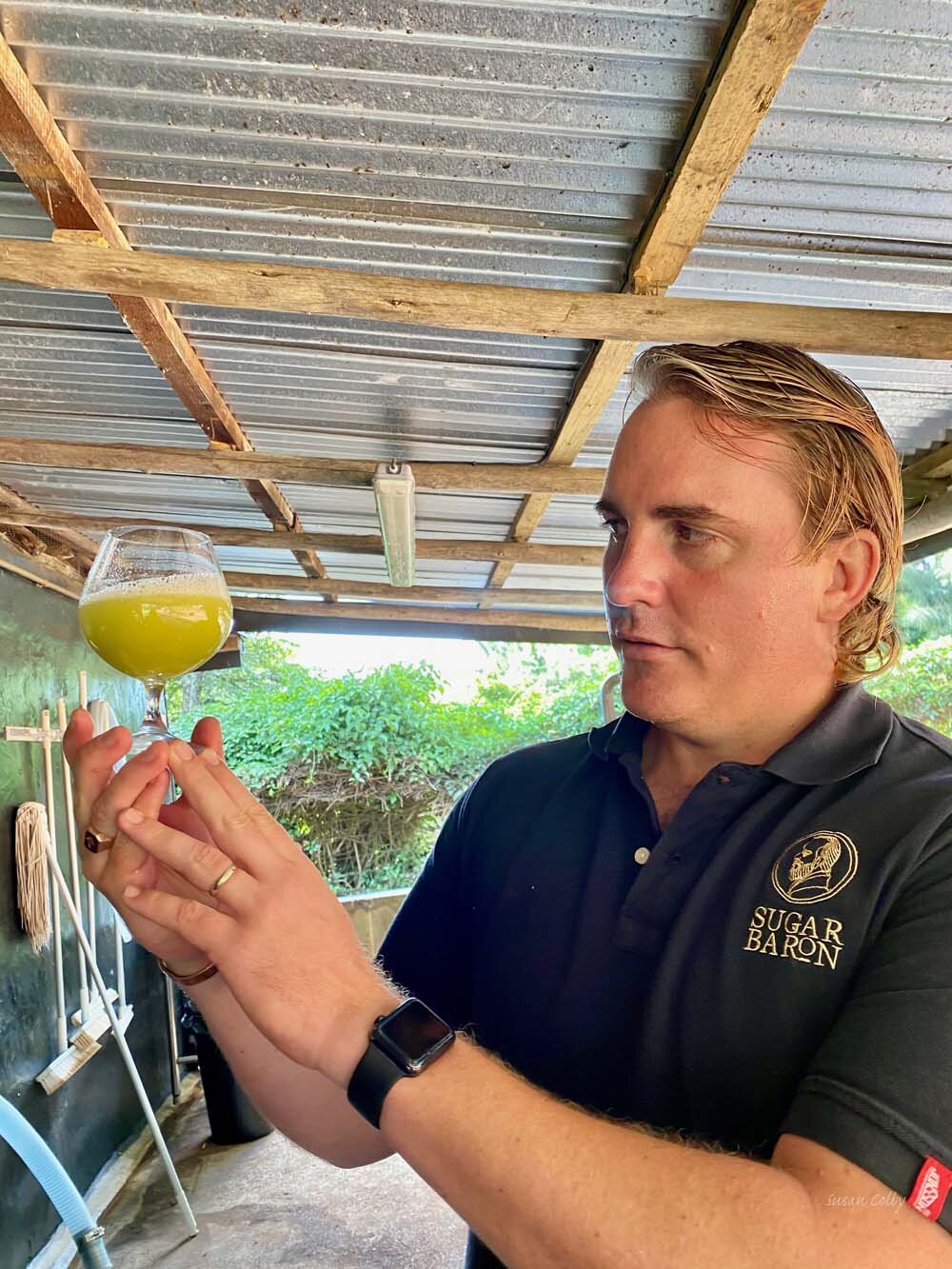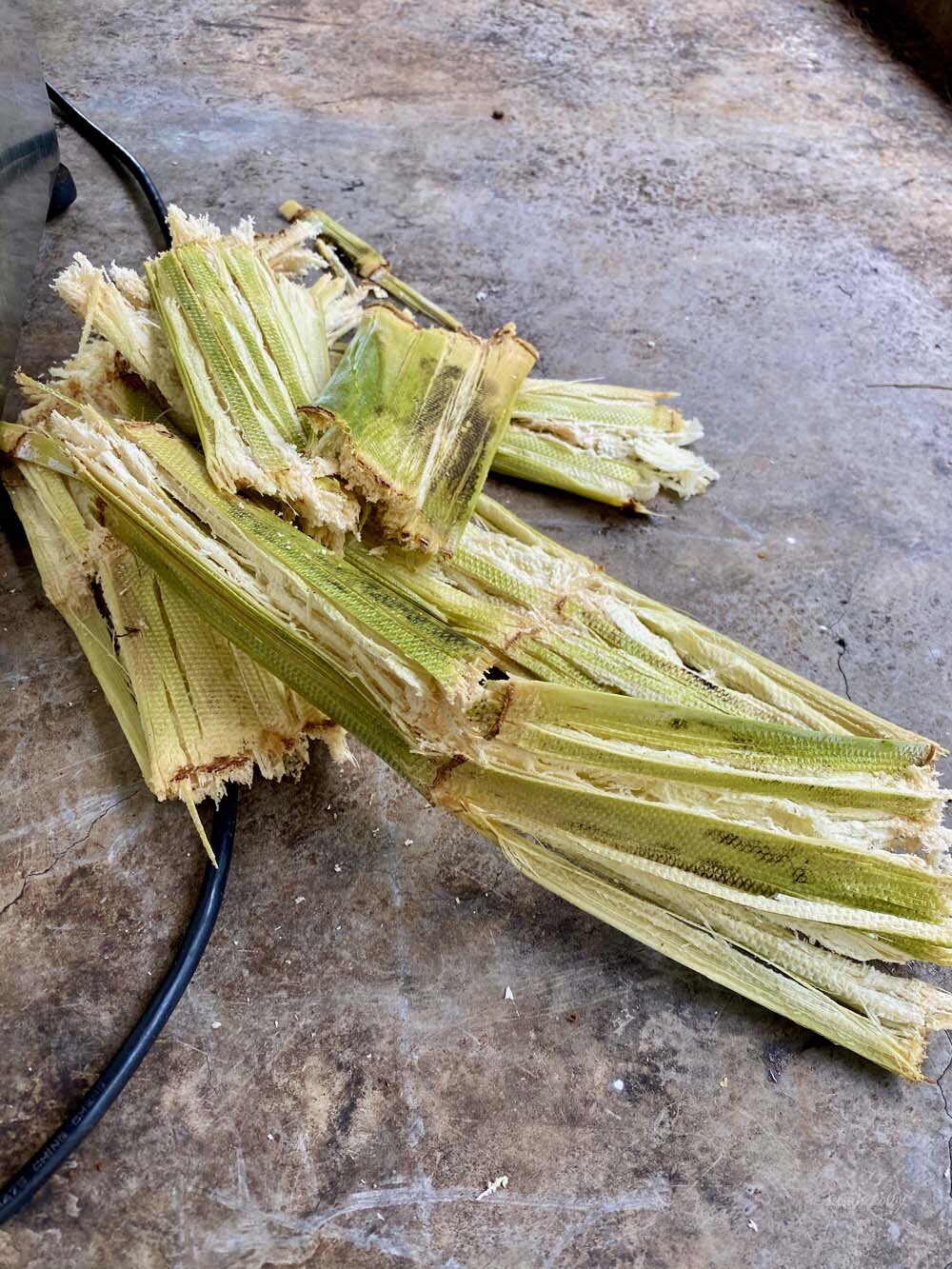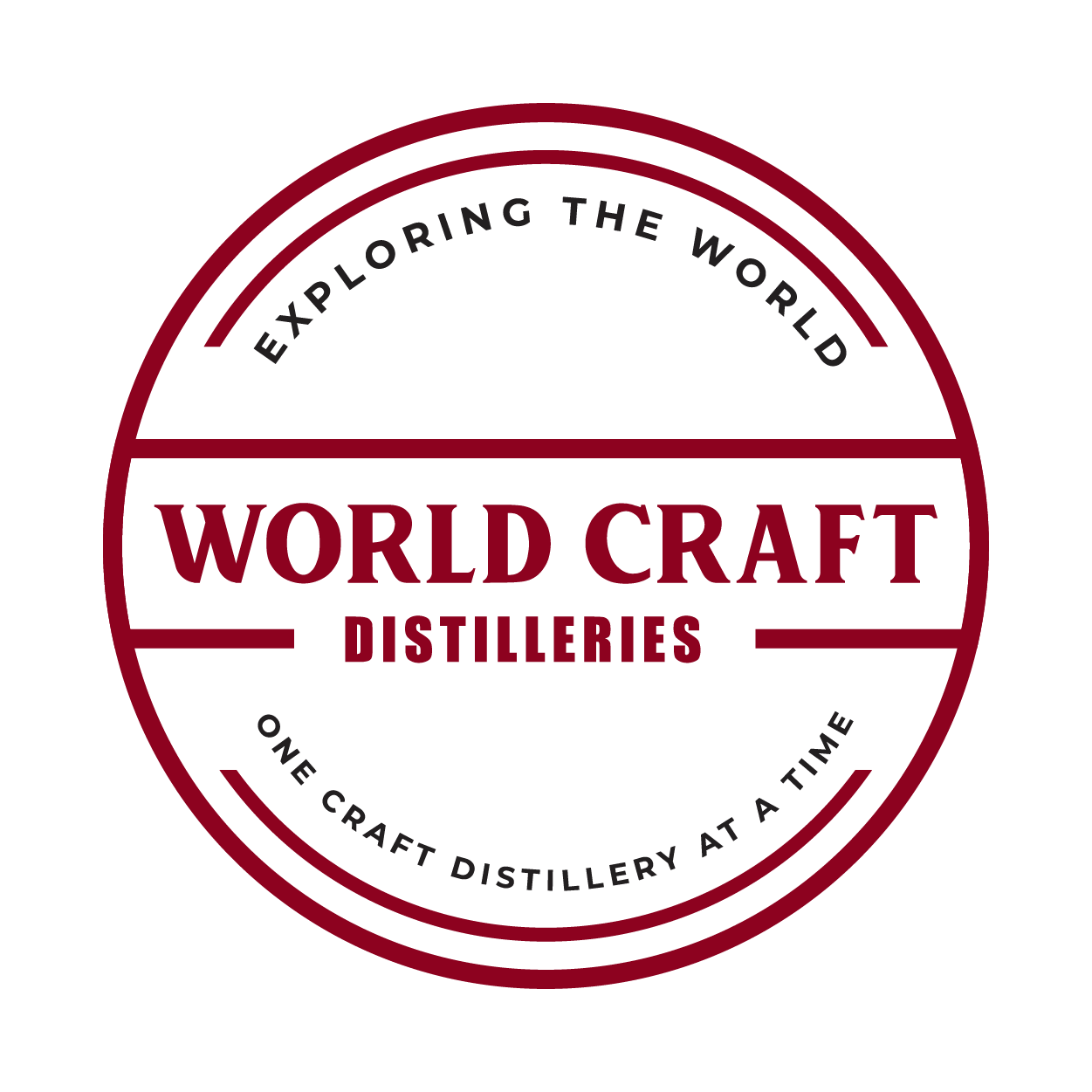When I popped the cork on the bottle of Sugar Baron Single Estate Craft White Rum, I smelled sunshine.
And it wasn’t because I had been out in the sun for hours but because that is the pure essence of the r(h)um Marisa and Brad O’Neill are distilling in their small distillery in the KwaZulu Natal Midlands.
I’m always on the lookout for new and interesting distilleries to visit. Especially rum distilleries as they are pretty rare, and more particularly distilleries that use the agricole method. For the uninitiated, rhum agricole is the French Caribbean method which uses only freshly crushed sugar cane juice in fermentation, never molasses or with any added sugar. It has a definitive, grassy “funk” to it that makes me never want to drink the “usual” rum again.
My drive to Sugar Baron took me off the main roads and out through the sugar cane fields of KZN. Rolling hills as far as the eye can see, in varying shades of green, from newly planted cane to fields ready for harvest. Waze worked well but Lucy (my Waze voice) didn’t give me much warning before the left turn onto the dirt farm road. I bumped along for a couple of miles, with the trees on the homestead and distillery in sight as I made my way through the fields.
Seafield Farm is an old farm dating back to the late 1800s, and I loved driving into the property through the avenue of indigenous yellowwood trees, staggered with the flamboyant jacarandas. On arrival, Brad O’Neill, one half of the SB team met me in very South African attire – shorts and gumboots!
After a quick cup of coffee in the main house, my first for the day as I had left home just after 6 to first, avoid the heat of the day and second and more importantly, to catch the whole process at the distillery. I wanted to see it all, right from seeing the field where the cane was growing, the cane arriving by tractor, the crushing and the start of the fermentation. Plus the run already working its way through the distilling process.
The 200 litre hybrid still, The Baroness, was working her magic and as we talked, Brad kept a close eye on the gauges and temperatures, keeping meticulous notes. His wife, Marisa was on a “school run” and it was Brad’s distilling day. They share the duties, both domestic and distilling and her day for distilling is Friday.
Brad grew up on a different family farm nearby in Eston, (15km as the crow flies) and Marisa is a Cape Town city girl. They met at Stellenbosch University where they were both studying sports science. After graduation he went into the wine industry. “I developed a passion for wine rather than sports,” Brad joked. Marisa went into the hospitality industry and both loved what they were doing. But when his Dad died 10 years ago, they made the decision to return to the farm.
An Idea Fermenting
For years, the idea of producing rum on the farm fermented in the back of their minds. But Brad had to learn to be a sugar farmer first to take over from his Dad. And they started a family. Then, just 3 years ago they had a serendipitous moment on a flight to Cape Town. The inflight magazine showed a flow chart on how to start a rum distillery in Mauritius.
“It was a sign,” Brad said, laughing. “We got goose bumps and knew we had to do it and knew if we didn’t, there would always be what ifs.”
Neither Brad or Marisa had any distilling experience but with training at Distillique and help from Hendre’ Barnard they went to work to learn the business. The first couple of years were trial and error and product development. Plus completing the reams of paperwork required to open the distillery, which was finally completed in October last year when they received their operating license.
As Brad and I chatted, Marisa returned from dropping their 3 children at school and she stepped in to help monitor the distilling process.
The farm itself is a total of 313 hectares with 210 of those under sugar cane, most of it contracted out. Through many trials run through the Baby Baron still, the O’Neills have hit on just the right yeast and sugar cane varietal to be able to produce the single origin, single estate, single varietal that makes Sugar Baron so special. They currently produce about 350 bottles a month, with half going into barrels in their expanding Solera system and the rest going to retail.
We watched as a big, red tractor appeared, pulling a trailer loaded with fresh cut, biodynamically-grown cane and the ladies who do the harvesting. “The women are much better at that than the men,” Brad confirmed. “They take much more care,” pointing to the smooth canes, devoid of all tops and leaves, which are all left on the fields to compost.
The varietal they use, N59, is a new strain released in 2019. “It has longer internodes even in dry conditions,” Brad noted, acknowledging the need to adjust to climate change. “It’s clean, it beautiful, green and grassy and vegetal. It’s got that typical character flavour we want in our rum,” he enthused. He continued to explain that the canes with red, purple and yellow skins have completely different characteristics, with “that stone fruit, yellow character.”
Currently, the cane is run through a small crusher which produces the pure, clean juice and the leftover fibre is returned to the fields. Brad crushed a cane and handed me a glass of juice, which brought back memories of my childhood, when we often had sugar cane stems to chew on! This was a lot easier.
With a refractometer, or brix meter, Marisa measured the brix levels of the juice and I was amazed to learn how low on the Glycemic Index (GI) scale the juice is. Marisa commented, “How nice that you can drink the product you are going to ferment!” The perfect pick-me-up!
Because the cane needs to be crushed before it starts to ferment naturally, Nobuhle and Nomkomaas, the two women who work in the distillery, manually feeding three stems at a time into the crusher, capturing the pure juice which then goes straight into the nearby fermenter. Depending on the weather and temperature (it was close to 35C/95F that day) it will remain there for 4-5 days before the next process begins. “We ferment for 4 to 5 days on average. In summer, we can have days where the ferment is done in 3 days, but we try and slow things down a bit by bringing down the temperature when the ferment gets too hot, too quickly,” Marisa said.
Several of the farm staff currently help at the distillery with various tasks as everything is done at the farm, including bottling and labeling. Marisa and Brad are hoping that in the future, Nobuhle and Nomkomaas and a couple of the men will be trained to take over more and that they will be able to send them to Distillique for formal training.
Sugar Baron has a small shop attached to the distillery where they not only do private tastings, but also promote other small, craft distilleries’ products.
Standing outside the barrel room, tasting from the different barrels, with the sun shining on the “heart field” ablaze with sunflowers, and expanses of cane fields shimmering in the heat, I thought about how lucky I am to be out visiting people like Brad and Marisa who have dared to discover and delight in following their dream, creating a distillery that is as craft as it can be.
For more information, follow them on Facebook and Instagram @SugarBaronCraftDistillery
Sugar Baron Craft Distillery
Seafield Farm
Richmond, KZN
Brad: (+27) 82 414 8576
Marisa: (+27) 82 688 7581
Email: admin@sugarbaron.co.za

